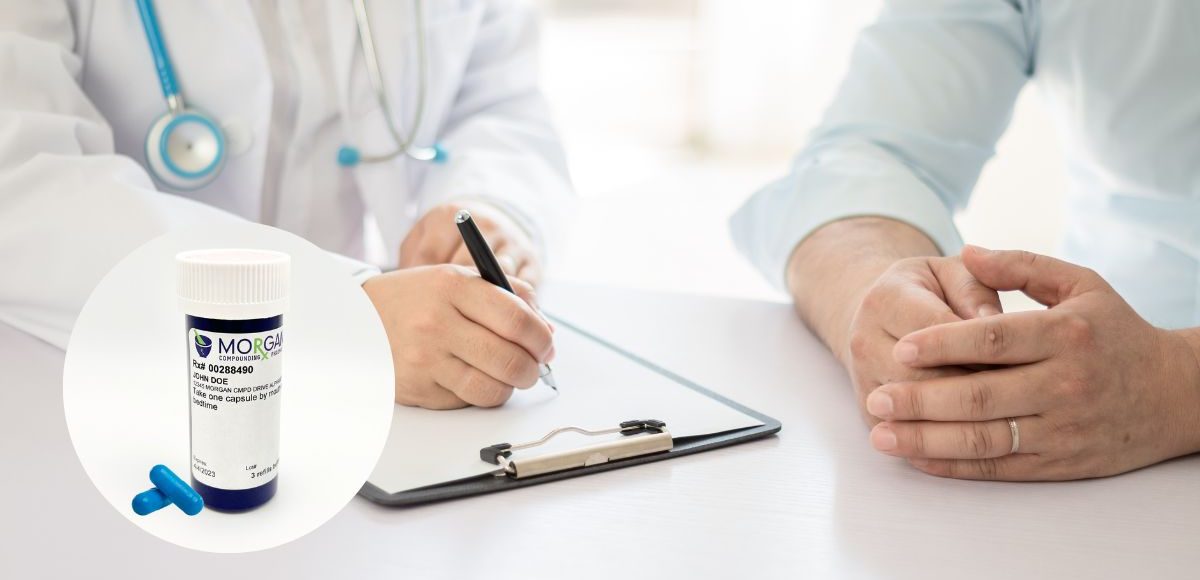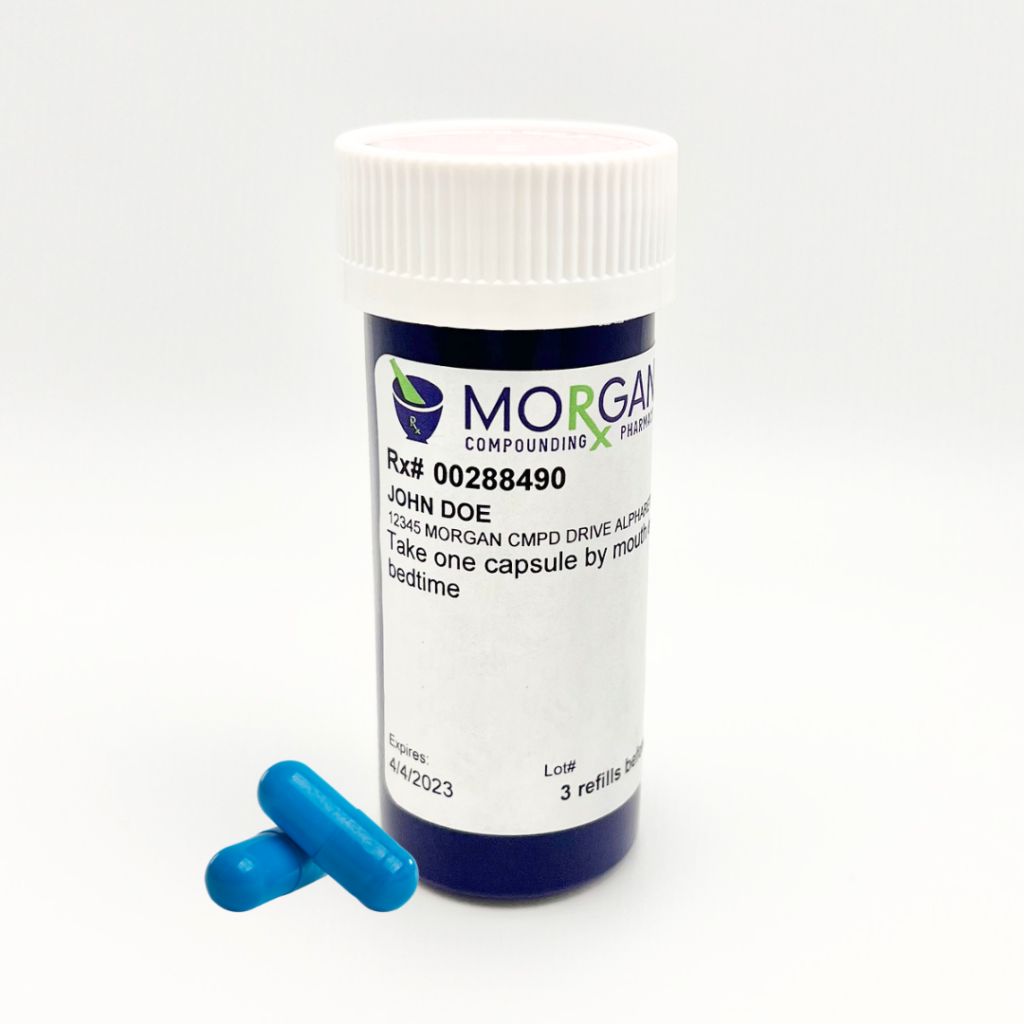Why are Georgia Practitioners Prescribing Compounded Methylene Blue?
We continuously explore the evolving landscape of medicine, seeking innovative therapies that can revolutionize patient care. Today, we are examining the impressive potential of Methylene Blue, a compound that is rapidly gaining recognition in the scientific and medical community for its various therapeutic applications.
Since the synthetic compound was first produced in 1876 as a dye, Methylene Blue’s versatility has expanded, encompassing fields from biology to pharmacology. For decades, researchers have been studying its functions to discover the possible therapeutic benefits, ranging from neuroprotective properties (brain health) to antimicrobial activity (bacterial).
The molecular weight of Methylene Blue is small allowing it to be delivered into tissues quickly. Methylene Blue can be reduced into leucomethylene blue (leucoMB), and therefore, it can be used as an antioxidant to protect cells against oxidative stress related to pathological
conditions.

Brain Health: Methylene Blue for Memory, Cognition & Mood
One of the compelling aspects of Methylene Blue lies in its neuroprotective and healing properties.

Brain Health: Methylene Blue for Memory, Cognition & Mood
Mitochondria, often referred to as the “powerhouses” of our cells, are crucial for producing adenosine triphosphate (ATP), the energy that fuels our bodily functions.
Studies have shown that Methylene Blue can boost mitochondrial function by accepting and donating electrons within the mitochondrial electron transport chain, a key process in ATP production. This electron cycling can also reduce the production of harmful reactive oxygen species and increase ATP generation, thereby improving cell function and survival.
In a study published in “Brain Research“, researchers found that Methylene Blue might help manage neurodegenerative diseases like Alzheimer’s and Parkinson’s. The study revealed that the compound could reduce the oxidative stress typically observed in these conditions, suggesting potential for therapeutic use.
Consequently, Methylene Blue is seen by practitioners as a potential therapeutic strategy for numerous conditions associated with mitochondrial dysfunction, ranging from neurodegenerative diseases to certain types of cancer.
Additionally, Methylene Blue has shown potential in addressing mood disorders. A pilot randomized study in “Bipolar Disorders” demonstrated that it could reduce manic symptoms in bipolar disorder patients. These initial findings warrant further exploration in larger, more controlled studies, which could potentially revolutionize mood disorder therapies.
One of the compelling aspects of Methylene Blue lies in its neuroprotective and healing properties.
Mitochondria, often referred to as the “powerhouses” of our cells, are crucial for producing adenosine triphosphate (ATP), the energy that fuels our bodily functions.
Studies have shown that Methylene Blue can boost mitochondrial function by accepting and donating electrons within the mitochondrial electron transport chain, a key process in ATP production. This electron cycling can also reduce the production of harmful reactive oxygen species and increase ATP generation, thereby improving cell function and survival (1).
In a study published in “Brain Research“, researchers found that Methylene Blue might help manage neurodegenerative diseases like Alzheimer’s and Parkinson’s. The study revealed that the compound could reduce the oxidative stress typically observed in these conditions, suggesting potential for therapeutic use (1).
Consequently, Methylene Blue is seen by practitioners as a potential therapeutic strategy for numerous conditions associated with mitochondrial dysfunction, ranging from neurodegenerative diseases to certain types of cancer (1).
Additionally, Methylene Blue has shown potential in addressing mood disorders. A pilot randomized study in “Bipolar Disorders” demonstrated that it could reduce manic symptoms in bipolar disorder patients (2). These initial findings warrant further exploration in larger, more controlled studies, which could potentially revolutionize mood disorder therapies.
Methylene Blue for Bacterial Infections
Aside from neurological implications, the antimicrobial properties of Methylene Blue are noteworthy. Studies show it may inhibit the growth of certain bacteria. Researchers noted that Methylene Blue could potentially serve as a cost-effective and powerful antimicrobial agent for bacterial infections, especially vital in an era of increasing antibiotic resistance.
Morgan Compounding Pharmacy: Georgia’s Methylene Blue Experts
The wide-ranging therapeutic potential of Methylene Blue is an example of how Morgan Compounding Pharmacy can tap into the power of compounds, exploring their potential for addressing an array of conditions. As research continues to unearth more about this multifaceted compound, we are excited to be at the forefront of its potential.
We are able to compound Methylene Blue into capsules or suspensions.
Methylene Blue requires a prescription from a healthcare provider. For providers or patients interested in learning more about Methylene Blue compounded medications or have any other prescription or supplement inquiries, feel free to reach out to our knowledgeable team at Morgan Compounding Pharmacy today.
Practitioners have been prescribing Methylene Blue for various patient conditions:
- Other diseases related to mitochondrial dysfunction
- Anti-aging
- Long COVID symptoms
- Alzheimer’s disease
- Autism
- Depression
- Neurodegenerative diseases
- Pain
- More!
The wide-ranging therapeutic potential of Methylene Blue is an example of how Morgan Compounding Pharmacy can tap into the power of compounds, exploring their potential for addressing an array of conditions. As research continues to unearth more about this multifaceted compound, we are excited to be at the forefront of its potential.
We are able to compound Methylene Blue into capsules or suspensions.
Methylene Blue requires a prescription from a healthcare provider. For providers or patients interested in learning more about Methylene Blue compounded medications or have any other prescription or supplement inquiries, feel free to reach out to our knowledgeable team at Morgan Compounding Pharmacy today.
References
1. Wen, Y., Li, W., Poteet, E.C., et al. (2011). Alternative mitochondrial electron transfer for the treatment of neurodegenerative diseases and cancers: Methylene blue connects the dots. Brain Research, 1404, 3-7.
2. Alda, M., McKinnon, M., Blagdon, R. et al. (2017). Methylene blue treatment for residual symptoms of bipolar disorder: randomized crossover study. Bipolar Disorders, 19(1), 68-71.
3. Wainwright, M., Crossley, K.B. (2017). Methylene Blue–a therapeutic dye for all seasons? Journal of Chemotherapy, 29(4), 221-228.
4. Xue H, Thaivalappil A, Cao K. The Potentials of Methylene Blue as an Anti‐Aging Drug. Cells. 2021 Dec 1;10(12):3379. doi: 10.3390/cells10123379.
PMID: 34943887; PMCID: PMC8699482.


